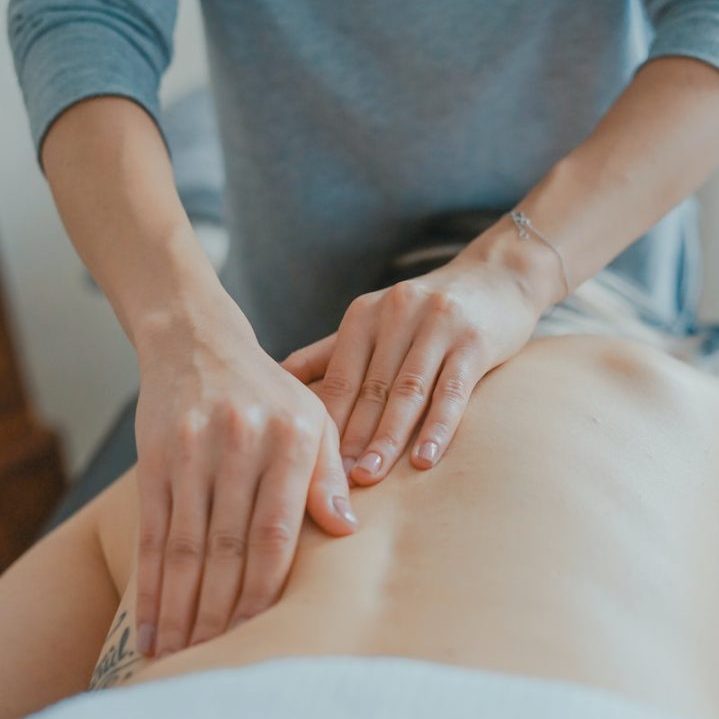Brilliant treatment. Sandra squeezed me in to treat a new condition. Problem solved. Thank you Sandra.
Reformer Pilates & Osteopathy Maidstone, Kent

Osteopathy is a method of assessing, treating and preventing a wide range of health problems. As a registered Osteopath, I use a combination of movement, stretching, targeted deep tissue massage and manipulation of a person’s muscles and joints to improve function, relieve pain and aid recovery.
The body has the natural ability to maintain itself and, by helping this process, I can promote the restoration of normal function. The principle of osteopathy is that the wellbeing of an individual relies on the way that bones, muscles, ligaments, connective tissue and internal structures work with each other.
I always take the time to understand my patient’s unique combination of symptoms, medical history and lifestyle. This helps me to make an accurate diagnosis of the causes of the pain or lack of function (rather than just addressing the site of the condition), and from that, I formulate a treatment plan that will achieve the best outcome.
I frequently work alongside other health professionals, such as GPs, nurses and midwives as well as alternative medical practitioners. Osteopathy works well to complement other medical interventions including surgery and prescribed medication.
The National Institute of Clinical Excellence (NICE) advises that GPs can safely refer patients to an Osteopath for treatment. Osteopathy is available on the NHS in some areas of the UK.
The most common problems that can be helped by Osteopathy include:
Lower back pain
Neck pain
Headaches and migraines
Disc injuries, including sciatica
Knee pain
Arthritic pain
Sports injuries
Post-traumatic injuries – whiplash
Shoulder conditions – rotator cuff syndrome
Muscle tension and tears
The techniques I might commonly use include:
Soft tissue techniques
Mobilisation and manipulation of joints
Medical Acupuncture
Specific exercise prescription for the prevention and rehabilitation of injury and chronic pain
Taping to protect joints and injured tissues
Assessment and treatment of postural, pelvic and spinal alignment
I also use a range of therapy tools to optimise your Osteopathy treatment. You can find out more information about our Cupping and Dry Needling Therapies.
Your first appointment will involve a detailed case history, allowing me to gain a good understanding of your presentation as well as your health and general well-being. Next, is the examination, where I will ask you to do various movements, to allow me to see the restricted and mobile areas in your body. An explanation of findings and diagnosis will follow, ensuring that you understand what is causing the problems and how I will address them. This will then be followed by the treatment which will be tailored to your specific presentation, helping to alleviate the problem.
In order for a thorough examination, you may be asked to undress to your undergarments, some people prefer to wear shorts which is absolutely fine as long as they are not too tight to restrict movement. Ladies can often wear a vest if preferred, although looking at the spine can be difficult with too many layers on. I aim to maintain your modesty so will always have a cover/blanket for your comfort. If you would feel more comfortable with a chaperone, please feel free bring someone else along to the appointment with you, which is absolutely fine.
Osteopaths are regulated by the General Osteopathic Council (GOsC). It is against the law to call yourself an osteopath unless you are qualified and registered with the GOsC. The minimum qualification for an osteopath is completion of a four or five year degree, which includes at least 1000 hours of supervised clinical practice. Osteopaths must continue to update and expand their knowledge by logging a minimum of 30 hours per year of continuing professional development. GOsC can remove an osteopath from the register if they fail to maintain a strict code of professional practice. I am registered with the GOsC, you can find me on their register here: www.osteopathy.org.uk
Osteopathy is very safe. It is estimated that between 1 in 50,000 and 1 in 100,000 patients will suffer a reaction to osteopathic treatment that is serious enough to require further medical treatment or does not resolve within 48 hours.
I love treating babies as a Paediatric Osteopath. Cranial Osteopathy is the most well-known osteopathic treatment for babies, but very gentle paediatric osteopathy techniques can also help release and balance other areas of physical tension.
More information can be found on my Paediatric Osteopathy page here.
